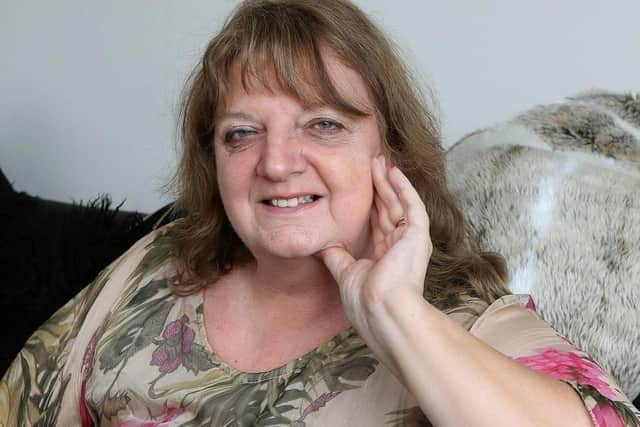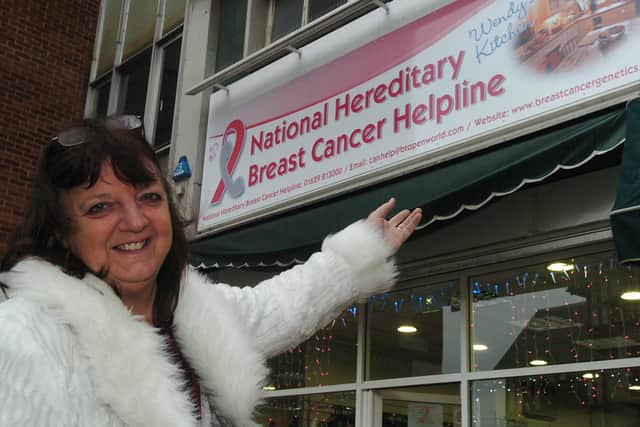Derbyshire campaigner Wendy Watson welcomes ‘major breakthrough’ for women with hereditary breast cancer
and live on Freeview channel 276
A major drug trial has show that women’s risk of cancer returning or spreading was cut by 42 per if they were given olaparib after chemotherapy for early stage breast cancer linked to certain genetic mutations.
Previously olaparib has only been used for advanced cancers but the study – dubbed the OlympiA trial – has now demonstrated its effectiveness at the early or “curative” stage, researchers say.
Advertisement
Hide AdAdvertisement
Hide AdWendy Watson, of Wingerworth, was just 37-years-old when, in 1992, she became Britain's first woman to have both breasts removed in a desperate bid to halt the disease which had devastated three generations of her family.


She said: “Anything that gives more options for people has to be welcome news. It is all good news because some people wouldn’t want to take the more drastic option that I took.”
Four years after her surgery Wendy, now aged 66, founded the National Hereditary Breast Cancer Helpline and to date the charity has helped thousands of women.
The helpline, which runs all day, every day, supports those worried about their family history and provides full information on all the options currently available and referrals where appropriate.


Advertisement
Hide AdAdvertisement
Hide AdWendy, who was awarded an MBE in 2012 for her work, added: “When I first started the helpline there were really very few options. The gene had just been identifed so genetic testing was very much in its infancy and we’ve welcomed various improvements such as tamoxifen, better screening and MRI scanning.
"We’ve achieved a lot in improving access to services for patients which has been an enormous leap forward.
"People need to be able to take control of their own destiny. It shouldn’t be a decision on what I think is right or what the doctor thinks is the right thing, it’s what you personally can cope with when you’re having to make decisions on maybe having surgery before you’ve got anything wrong with you.
"That’s quite a tough thing to ask somebody to do but, the important thing, is having all the information to hand before you make those decisions. You need to know what the alternatives are, the risks, and the pros and cons of every option available.
Advertisement
Hide AdAdvertisement
Hide Ad"The more options there are the better it is for more people.”
In 2006, at the age of 24, Wendy’s daughter Becky Measures also had a double mastectomy after genetic tests revealed she had an 85 per cent risk of developing breast cancer.
Olaparib works by stopping cancer cells from being able to repair their DNA by inhibiting a molecule called PARP, causing cancer cells to die.
It works well for patients with faulty versions of the BRCA1 or BRCA2 genes, which are normally involved in another system for repairing DNA, and is already licensed for use in treating genetic forms of ovarian, prostate and pancreatic cancers, although it is expensive and not yet available on the NHS.
Advertisement
Hide AdAdvertisement
Hide Ad“This is a major breakthrough,” said Professor Paul Workman, chief executive of the Institute of Cancer Research, London (ICR). “I am now keen to see this new treatment be approved and made available to patients worldwide as fast as possible.”